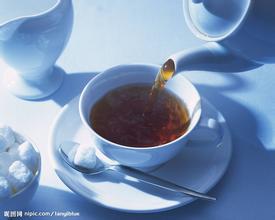Calibration adjustment of coffee grinder
Calibration adjustment of coffee grinder
Determine the direction of adjustment you need (finer or thicker). Make sure there are enough coffee beans in the warehouse, and the valve between the warehouse and the sharpening knife is opened so that the coffee beans can fall smoothly into the grinding area.
Turn on the grinder for 10 seconds and discard the coffee powder (these are coffee powders that have not been adjusted).
Use the coffee powder to make a cup of coffee to ensure the accuracy of the steps of serving, flattening and pressing powder. Test the quality of the coffee and the extraction time. Constantly adjust the dial to make the powder reach a perfect thickness.
Let me tell you the importance of these data. Whenever we adjust the coarseness of the bean grinder to + /-1 scale, the extraction time of coffee will change by 4-5 seconds, and the total weight of coffee will have an error of 10g.
Since we use a large bean grinder, the above changes may not be so obvious on a small bean grinder. But this is enough to prove how important the data is in debugging the bean grinder.
[start debugging bean grinder]
When you do this, most brands of bean grinders on the market will store 60g ground coffee powder. According to our experience, you need to store at least 100g of coffee powder in the bean grinder before you can start debugging the machine, and the debugging effect is more obvious. So, you need to make at least three more espresso before you start debugging the bean grinder, and when you're done, you have to make at least five or more cups of coffee. This is very important! The last thing you want to do is go back to work and retest and debug your machine. If you get the results you want, congratulations! But remember, this is just the beginning. Ensuring the accuracy of the data in the test does not guarantee the perfect quality of your coffee, but it is still a shortcut for you to pursue the best quality of your coffee! If you successfully use this method to calculate the formula for one type of coffee, you can start testing the data needed to make other varieties of coffee, such as drip coffee. Then you will know which data are useful and which are not.

Important Notice :
前街咖啡 FrontStreet Coffee has moved to new addredd:
FrontStreet Coffee Address: 315,Donghua East Road,GuangZhou
Tel:020 38364473
- Prev

Introduction to the Flavor description treatment method of Robastian Coffee Bean Variety characteristics
Boutique coffee beans are originated in the Congo, which accounts for 20% 30% of the world's output. It is suitable for lowlands below 500 meters. It has strong adaptability to the outside world, can resist bad climate, resist diseases and insect pests, and can be allowed to grow in the wild. It is a kind of coffee tree that is easy to cultivate. It is generally used to make instant coffee Robasta coffee tree originating in the Congo of Africa.
- Next

Introduction to coffee berry treatment methods, grinding degree, quality, taste, fine coffee beans
Introduction to coffee bean treatment 1.2 Water washing is the most popular treatment method at present, and most boutique coffee beans will choose water washing method. Washing coffee refining process: harvesting storage tank (removal of impurities and immature beans) pulp removal machine (removal of pulp and impurities) fermentation tank (removal of mucous membrane attached to endocarp) washing tank (select light and hard beans)
Related
- Guji coffee producing area of Guji, Ethiopia: Humbela, Shakiso, Wulaga
- What is the most expensive variety of Qiloso in BOP multi-variety group?
- How to store the coffee beans bought home?
- Why are Yemeni coffee beans so rare now?
- Ethiopian Sidamo all Red Fruit Sun Sun Santa Vini Coffee beans
- SOE is mostly sour? What does it mean? Is it a single bean? what's the difference between it and Italian blending?
- Is Italian coffee beans suitable for making hand-brewed coffee?
- How to choose coffee beans when making cold coffee? What kind of coffee beans are suitable for making cold coffee?
- Just entered the pit to make coffee, what kind of coffee beans should be chosen?
- Can only Japan buy real Blue Mountain Coffee? What are authentic Jamaican Blue Mountain coffee beans?

